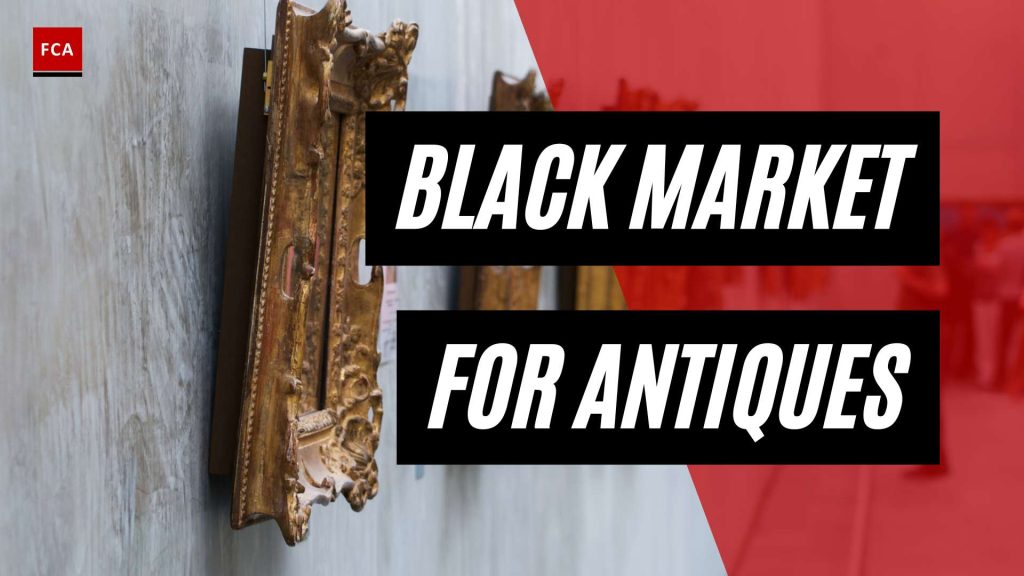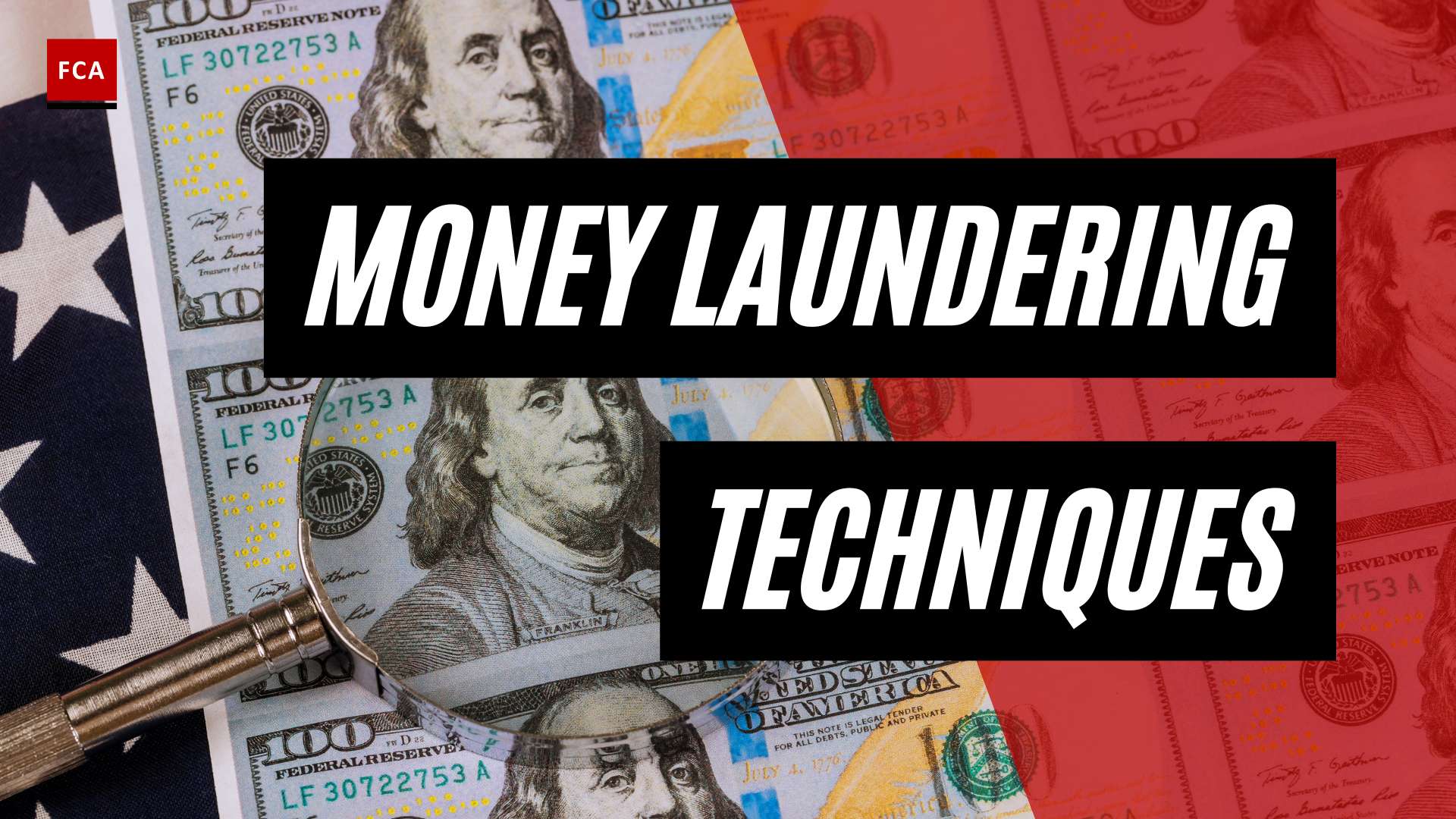The Black Market for Antiques
The black market for antiques operates as a clandestine network involved in the illicit trade of cultural heritage items. This underground market not only poses significant challenges to the preservation of cultural heritage but also has links to organized crime and terrorism.
Overview of the Illicit Trade
The black market for antiques is a thriving and lucrative sector, estimated to be worth billions of dollars annually, as reported by the United Nations Office on Drugs and Crime (UNODC) in 2017 (Euronews). It involves the trafficking, buying, and selling of stolen or illegally obtained artifacts, artwork, and antiquities.
Cultural heritage items are often looted from archaeological sites, museums, and private collections. Countries affected by conflict and instability, such as Syria and Iraq, have been particularly vulnerable to widespread looting, resulting in the loss of important artifacts and antiquities. The looting of historical sites is not a recent phenomenon, with reports dating back thousands of years (Country Living).
Link to Organized Crime and Terrorism
The illegal trade of cultural property through the black market is deeply intertwined with criminality, including drug trafficking, terrorism, and money laundering (Euronews). Terrorist organizations, such as ISIL, have reportedly used the looting and trafficking of art and antiquities as a significant revenue stream.
The involvement of organized crime groups in the black market for antiques allows them to exploit the demand for cultural heritage items and profit from their illegal trade. These criminal networks often collaborate with smugglers, dealers, and intermediaries to transport and sell the stolen artifacts.
The link between the black market for antiques and terrorism highlights the urgent need for international cooperation and concerted efforts to disrupt these illicit networks. Efforts to combat the illicit trade of antiques require collaboration among law enforcement agencies, art market professionals, and cultural heritage organizations.
Understanding the scope and consequences of the black market for antiques is essential in developing effective strategies to preserve cultural heritage, combat organized crime, and protect the integrity of the art and antiquities market.
Money Laundering through Art and Antiques
In the dark underbelly of the art world lies a sinister connection to money laundering. Criminals have long exploited the art market as a means to legitimize illicit funds and obscure their true origins. This section explores the role of art in money laundering and the methods employed to launder money through art.
Role of Art in Money Laundering
The illegal trade of cultural property, including art and antiques, has been deeply intertwined with criminality, including money laundering. The inherent characteristics of art, such as its subjective value, lack of standard pricing, and ability to be easily transported, make it an attractive vehicle for money laundering.
Art serves as a tool for criminals to convert and disguise their ill-gotten gains. By purchasing high-value artworks, criminals can introduce their illicit funds into the legitimate art market. Once the funds are integrated, the art can be sold or traded, allowing criminals to create a veneer of legitimacy around their tainted wealth.
The involvement of various actors in the art market, including dealers, auctioneers, museum curators, and individual buyers, can play a crucial role in the trade of stolen art and aid in laundering stolen objects within the legal art market. Their complicity or lack of due diligence can contribute to the perpetuation of the black market for art and antiques.
Methods of Laundering Money through Art
Money laundering through art involves several methods and techniques that allow criminals to obscure the origin of their funds. Some common methods include:
-
Overvaluation: Criminals may manipulate the prices of artworks, either through colluding with complicit actors or creating a fictitious market demand. By inflating the value of the artwork, criminals can effectively launder larger sums of money through the sale of seemingly valuable pieces.
-
Shell Companies: Criminals often establish shell companies or use existing ones within the art market to conduct transactions. These companies can serve as intermediaries, obscuring the true ownership and source of funds. This layer of complexity makes it challenging for authorities to trace the illicit origins of the funds.
-
False Provenance: Criminals may create fraudulent documentation, such as fake provenance or ownership history, to lend an air of legitimacy to artworks with questionable origins. This falsified history can make it difficult for law enforcement and art experts to identify stolen pieces.
-
Trade-Based Money Laundering: Criminals may exploit the global art market’s fragmented nature and lack of oversight to conduct trade-based money laundering. By manipulating invoices, undervaluing or overvaluing artworks, and using complex shipping and payment systems, criminals can move and launder funds across borders.
It’s important to note that the rise of the internet and online platforms has facilitated the sale of looted antiquities and increased the prevalence of fake art in the market (Euronews). The lack of accountability and oversight in online trading has raised concerns about the unethical practices that perpetuate the black market. Stricter regulations and increased transparency are needed to protect cultural heritage worldwide (Slate).
By understanding the role of art in money laundering and the methods employed, authorities and stakeholders in the art market can work together to combat this illicit practice and preserve the integrity of the art world. Implementing effective anti-money laundering measures, enhancing due diligence procedures, and promoting transparency are crucial steps in safeguarding the art market from being exploited for criminal purposes.
Challenges in Regulating the Black Market
Regulating the black market for antiques poses several significant challenges. These challenges include the online facilitation of the trade, limited legal frameworks, and corruption and complicity within the industry.
Online Facilitation of the Trade
The internet has played a significant role in the facilitation of the black market for antiques. It has provided a platform for the sale of looted antiquities and illegal artifacts, making it easier for criminals to reach a global market. In fact, it is estimated that up to half of the antiquities on the market are fake, highlighting the prevalence of fraudulent activity.
Major online platforms, including social media networks, have been criticized for their inadequate efforts to tackle the issue of the black market for antiquities. For instance, Facebook has faced criticism for allowing private groups to trade stolen artifacts with little intervention, thereby fueling the illicit art trade further. The lack of accountability and oversight in the online trading of antiquities has raised concerns about unethical practices that perpetuate the black market. Stricter regulations and increased transparency are needed to protect cultural heritage worldwide.
Limited Legal Frameworks
Another challenge in regulating the black market for antiques is the limited legal frameworks in place. The involvement of dealers, auctioneers, museum curators, and individual buyers, whether knowingly or unknowingly, plays a crucial role in the trade of stolen art. False papers, certificates of provenance, and the lack of specific regulations contribute to the laundering of stolen objects within the legal art market. These gaps in the legal framework make it easier for criminals to exploit the system and continue their illicit activities.
To effectively combat the black market for antiques, it is essential to strengthen legal frameworks and implement stricter regulations. This includes establishing clear guidelines for provenance documentation, implementing due diligence procedures, and increasing penalties for those involved in the illegal trade. By closing these legal loopholes, authorities can create a more robust framework to prevent the flow of illicit artifacts.
Corruption and Complicity
Corruption and complicity present significant challenges in regulating the black market for antiques. The involvement of individuals within the industry who turn a blind eye to the origins of the artifacts or knowingly participate in illegal activities contributes to the perpetuation of the illicit trade. This includes individuals who forge documents, misrepresent provenance, or engage in other fraudulent practices to facilitate the sale of stolen art.
Addressing corruption and complicity requires a multi-faceted approach. It involves enhancing the accountability of individuals within the industry, promoting ethical practices, and increasing awareness of the consequences of participating in the black market. Additionally, cooperation between law enforcement agencies, art experts, and international organizations is crucial in uncovering illicit networks and prosecuting those involved.
Regulating the black market for antiques is a complex task that requires collaboration and concerted efforts from governments, law enforcement agencies, art institutions, and the public. By addressing the challenges posed by online facilitation, limited legal frameworks, and corruption, authorities can take significant steps towards curbing the illicit trade and protecting our cultural heritage.
Efforts to Combat the Illicit Trade
Recognizing the significant impact of the black market for antiques and its association with money laundering and illicit activities, various measures have been implemented to combat this global issue. Efforts to tackle the illicit trade in art and antiques involve international agreements and resolutions, law enforcement initiatives, and the role of social media platforms.
International Agreements and Resolutions
International organizations, such as the United Nations Educational, Scientific and Cultural Organization (UNESCO), play a vital role in addressing the illicit trade in art and antiques. Security Council Resolution 2347 (2017) aims to assess and prevent the smuggling of cultural property and provides protections for cultural heritage in situations of armed conflict.
These agreements and resolutions focus on enhancing international cooperation, raising awareness, and establishing guidelines for the protection of cultural heritage. By fostering collaboration between countries, sharing information, and implementing stricter regulations, they aim to disrupt the supply chains and networks involved in the illicit trade.
Law Enforcement Initiatives
Law enforcement agencies worldwide have recognized the need to address the illicit trade in art and antiques. Recent record police seizures in Europe highlight the scale of the problem and the commitment to combat it. Operations such as Operation Medicus in Bulgaria and subsequent operations in Italy have resulted in significant seizures of art items and the arrest of individuals involved.
These law enforcement initiatives focus on conducting investigations, gathering intelligence, and coordinating efforts across jurisdictions. By targeting organized criminal networks involved in the illicit trade, these initiatives aim to disrupt their operations and bring perpetrators to justice.
Role of Social Media Platforms
The rise of social media has also brought new challenges in combating the black market for antiques. Online platforms, including Facebook, have been criticized for their role in facilitating the trade of stolen artifacts. Private groups on these platforms have been found to trade stolen antiquities with little intervention from the companies, thereby fueling the illicit art trade further (Slate).
However, efforts are being made to address this issue. Social media platforms need to take responsibility and implement stricter policies and mechanisms to identify and remove content related to the illicit trade in art and antiques. By collaborating with law enforcement agencies, sharing information, and utilizing advanced technologies, social media platforms can play a crucial role in detecting and preventing the online sale of stolen artifacts.
Combating the illicit trade in art and antiques requires a multi-faceted approach involving international cooperation, law enforcement efforts, and the active participation of social media platforms. By strengthening regulations, enhancing collaboration, and raising awareness, these efforts aim to disrupt the black market, protect cultural heritage, and hold accountable those involved in illicit activities.
The Impact and Consequences
The black market for antiques has far-reaching implications and consequences that extend beyond the realm of financial transactions. This section explores three significant impacts of the illicit trade: the loss of cultural heritage, the funding of terrorist organizations, and the ethical concerns and accountability surrounding the trade.
Loss of Cultural Heritage
The illegal trade of antiques and artworks contributes to the loss of cultural heritage worldwide. The looting and trafficking of art and antiquities have been deeply intertwined with criminal activities, including drug trafficking, terrorism, and money laundering. Countries like Syria and Iraq, which have experienced conflict and instability, have been particularly vulnerable to widespread looting of their cultural heritage sites, resulting in the loss of significant artifacts and antiquities (Euronews). The theft and smuggling of these irreplaceable cultural treasures erode the historical and cultural identity of nations and deprive future generations of their heritage.
Funding Terrorist Organizations
The black market for antiques has become a significant revenue stream for terrorist organizations. Groups like ISIL have reportedly used the looting and trafficking of cultural artifacts to finance their operations. The sale of looted antiquities not only provides direct financial support to these organizations but also undermines global security by enabling the perpetuation of terrorism. The profits derived from the illegal trade of antiques may fund the planning and execution of acts of violence, posing a threat to international stability and safety.
Ethical Concerns and Accountability
The black market for antiques raises ethical concerns and challenges surrounding accountability. The involvement of various actors within the sector, including dealers, auctioneers, museum curators, and individual buyers, plays a significant role in the trade of stolen goods (UNESCO Courier). Whether knowingly or unknowingly, their complicity enables the laundering of objects and the introduction of looted art into the legal market, making it difficult to identify and recover stolen cultural property. The lack of accountability and oversight in the online trading of antiquities further exacerbates these concerns, as it allows for unethical practices to persist within the black market. Stricter regulations and increased transparency are necessary to address these ethical concerns and ensure accountability throughout the art and antique trade.
The impact and consequences of the black market for antiques go beyond financial implications. The loss of cultural heritage, funding of terrorist organizations, and ethical concerns surrounding the trade highlight the urgent need for collaborative efforts to combat this illicit activity. Strengthening regulations, promoting transparency in the art market, and preserving cultural heritage are essential steps towards preventing the further growth of the black market and safeguarding the world’s artistic and historical treasures.
Recommended Solutions and Future Outlook
Addressing the black market for antiques and the illicit trade of cultural heritage requires a multi-faceted approach. To combat these issues effectively, the following recommended solutions and future outlook should be considered:
Strengthening Regulations and Collaboration
Enhancing the legal framework governing stolen cultural artifacts is crucial in deterring looting and reducing the illegal trade of antiques. Policymakers should work diligently to establish stricter regulations that discourage illicit activities in the art and antique market. This includes implementing comprehensive laws that address issues such as provenance verification, import and export controls, and the repatriation of stolen artifacts. Additionally, collaboration between law enforcement agencies, social media companies, and the art market is essential to effectively combat the black market for antiques. By sharing information and resources, authorities can more efficiently identify and investigate illicit activities (Slate).
Transparency in the Art Market
Promoting transparency within the art market is critical to reduce money laundering and the trade of illicit antiquities. Implementing measures that require thorough documentation of provenance and ownership history can help ensure the legitimacy of artworks and antiques. This could involve establishing standardized practices for record-keeping and requiring transparent transactions, including the disclosure of beneficial ownership. By increasing transparency, the art market can create a more accountable environment and deter the circulation of stolen cultural artifacts.
Preserving Cultural Heritage and Preventing Illicit Trade
Preserving cultural heritage is paramount in combating the black market for antiques. Collaboration between governments, international organizations, and local communities is essential to protect and safeguard cultural artifacts. This includes investing in the training and capacity-building of law enforcement officials and cultural heritage professionals. Furthermore, raising awareness about the importance of cultural heritage and the ethical implications of purchasing looted or illegally traded artifacts can contribute to reducing demand for illicit antiquities. Educational initiatives and public campaigns can play a significant role in promoting responsible collecting and discouraging the purchase of artworks and antiques with questionable origins.
By strengthening regulations, promoting transparency, and preserving cultural heritage, it is possible to gradually mitigate the black market for antiques and combat the illicit trade. Continued efforts from all stakeholders, including governments, law enforcement agencies, the art market, and the general public, are crucial in creating a future where the trade of cultural heritage is ethically sound and respectful of our shared global history.








